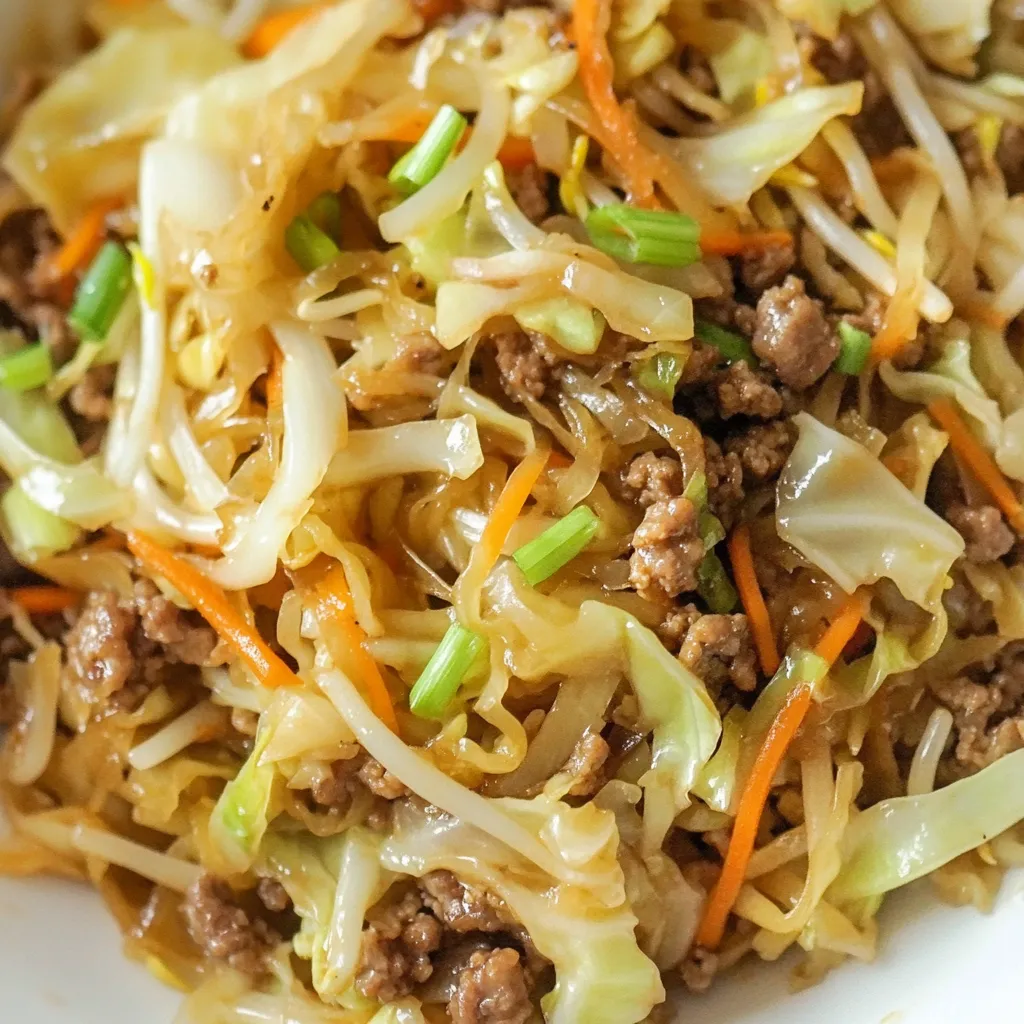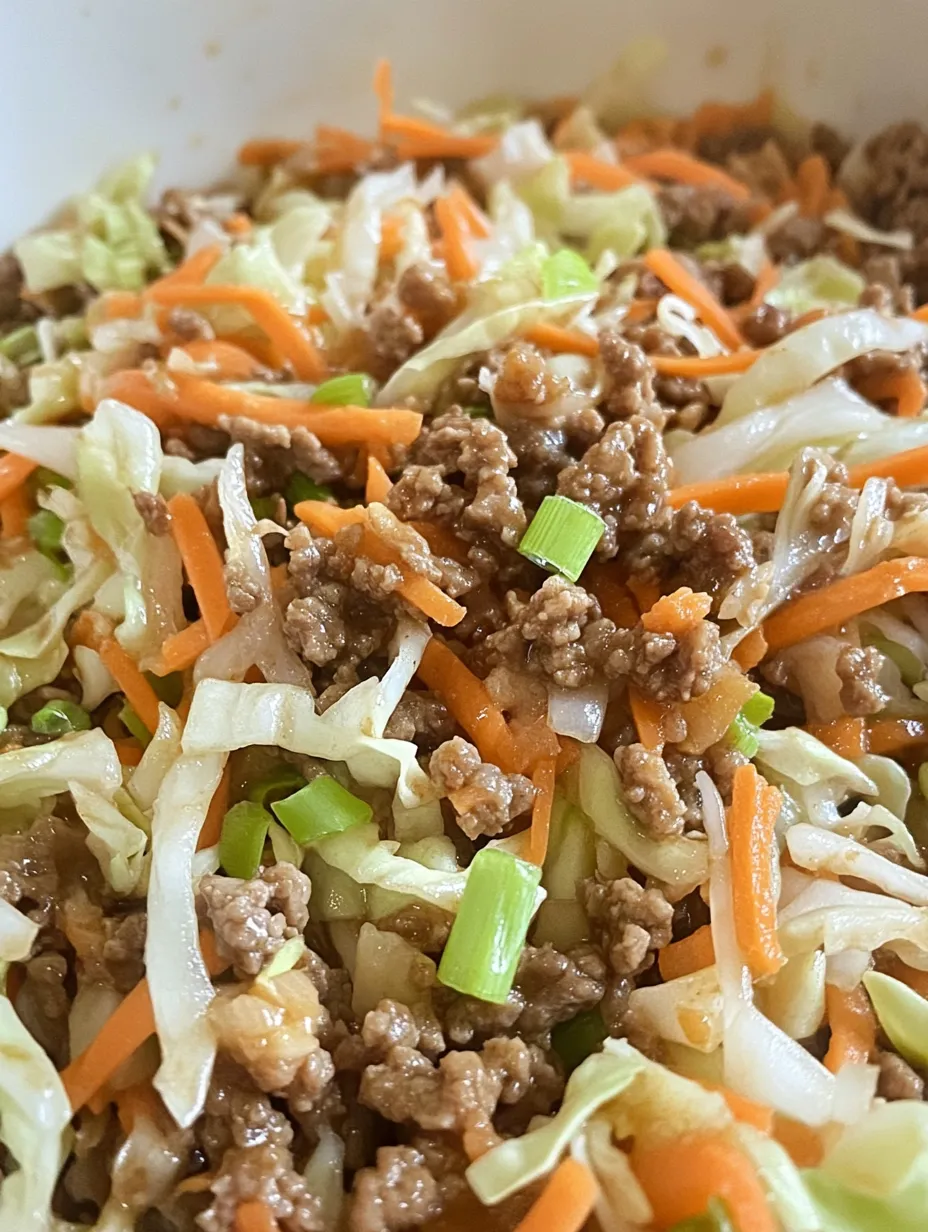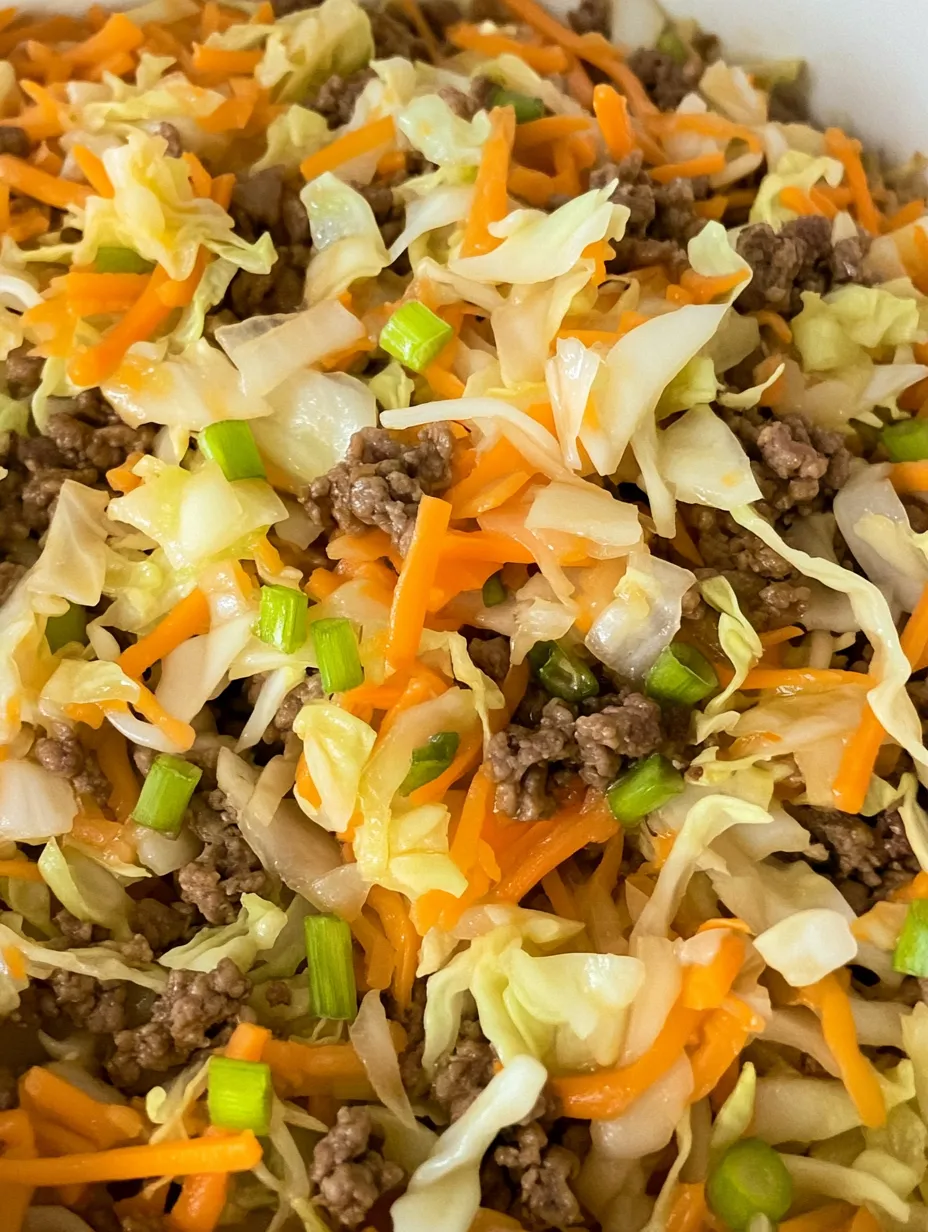 Pin it
Pin it
Craving the savory goodness of egg rolls without the fuss of wrapping and frying? This one-pan Egg Roll in a Bowl transforms the classic Asian appetizer into a hearty, wholesome meal that comes together in just 20 minutes. Ground beef, crisp cabbage, and aromatic seasonings combine to create a dish that's both satisfying and simple.
My family absolutely devours this dish every time I make it. The combination of tender meat and crunchy vegetables keeps everyone coming back for seconds, and the leftovers taste even better the next day for lunch.
 Pin it
Pin it
Must-Have Ingredients
- Ground beef (80/20 blend): The fat content keeps the meat juicy and adds rich flavor
- Coleslaw mix: Fresh, pre-shredded cabbage and carrots save precious prep time
- Fresh ginger root: Look for firm pieces with smooth skin for the most vibrant flavor
- Garlic: Choose plump, unbruised cloves for the best aromatic punch
- Low-sodium soy sauce: Controls saltiness while adding deep umami flavor
- Toasted sesame oil: A few drops transform the dish with nutty warmth
Last week, I discovered that grating fresh ginger on my microplane adds such an intense burst of flavor compared to the pre-minced variety. The difference was remarkable!
Instructions
- Prepare the Base:
- Heat your largest skillet over medium-high heat
- Add ground beef, breaking it into large chunks
- Let it brown undisturbed for 3-4 minutes to develop a caramelized crust
- Break into smaller pieces and cook until no pink remains
- Build the Aromatics:
- Reduce heat to medium
- Add diced onions to the beef drippings
- Stir in minced garlic and grated ginger
- Cook until onions become translucent and fragrant
- Add Vegetables:
- Toss in the coleslaw mix
- Stir frequently for 3-4 minutes until cabbage starts to wilt
- Keep vegetables crisp-tender for the best texture
- Finish and Season:
- Pour in soy sauce and sesame oil
- Add red pepper flakes to taste
- Toss everything together until well combined
- Taste and adjust seasonings as needed
Growing up, my grandmother always added water chestnuts to her Asian dishes for extra crunch. I've carried on this tradition, and it adds such a wonderful textural element to this recipe.
 Pin it
Pin it
The Secret to Perfect Texture
Achieving the ideal balance of textures transforms this simple dish into something spectacular. The cabbage should retain some crunch, creating a satisfying contrast with the tender meat. I've found that cooking the vegetables in batches helps prevent them from becoming too soft.
Making it Your Own
This recipe welcomes creativity. Try adding mushrooms for earthiness, snow peas for sweetness, or bean sprouts for extra crunch. The base recipe serves as a fantastic template for endless variations. Last month, I experimented with adding shredded Brussels sprouts to the vegetable mix, and it added a wonderful nutty flavor that complemented the sesame oil perfectly.
Serving Suggestions
Transform this dish into an interactive family meal by setting up a topping station. Include chopped peanuts, sliced green onions, sesame seeds, and various sauces. This approach has made our Sunday dinners more engaging and fun, with everyone customizing their bowls to their liking.
After years of making this recipe, I've found it's not just about the ingredients, but the timing and technique that make it special. When the vegetables maintain their crunch and the beef is perfectly caramelized, it creates a symphony of textures that makes this simple dish extraordinary.
Frequently Asked Questions
- → What's the best meat to use?
- Ground beef works great, but you can use ground pork, chicken, or turkey. Just keep the pieces chunky while cooking.
- → Can I make it ahead?
- Yes, store in the fridge for up to 3 days. Reheat in a pan to keep the veggies crispy.
- → How can I make it spicier?
- Add more red pepper flakes or drizzle with sriracha sauce at the end.
- → What can I serve with it?
- Steamed rice, cauliflower rice, or noodles work great. Top with extra green onions or sesame seeds.
- → Is this dish freezer-friendly?
- Yes, but the vegetables might get softer. Freeze for up to 2 months and reheat in a pan.
